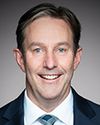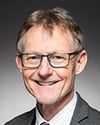Sure. Thank you so much for the question, Dr. Hanley. Given your expertise in your area, I know this is something that's germane to not only your understanding but also the understanding of the committee.
Obviously, we need to have an international strategy for health human resource recruitment, and that will invariably include a pathway to credentialing. This is obviously a very complex situation, because it requires multiple institutions, including the Royal College of Physicians and Surgeons of Canada and the College of Family Physicians of Canada, as well as the provincial colleges of physicians and surgeons. A multilateral approach will have to be undertaken, but invariably this will also have to relate to what we are very deeply committed to here in this country, which is quality of care. It's not necessarily quantity of care, but quality of care. How do you ensure a minimum quality of care and competence from places around the world so that Canadians can continue to receive the best and, frankly, highest-quality care that they deserve and need?
This is also a challenge in that space, and there needs to be a strategy for onboarding, whether that means apprenticeship programs or perhaps even a more streamlined approach to being able to stand for and, frankly, challenge the board examinations, which are, of course, necessary in order to proceed through licensing. These are conversations that need to happen at a federal level, and this is where you and your colleagues have a great role to play.





